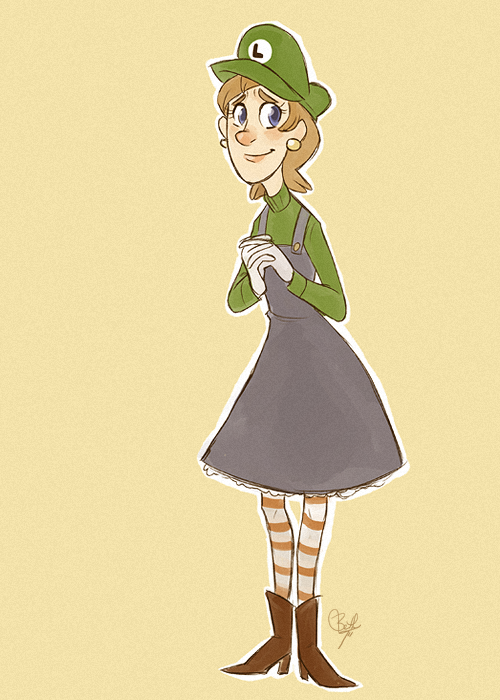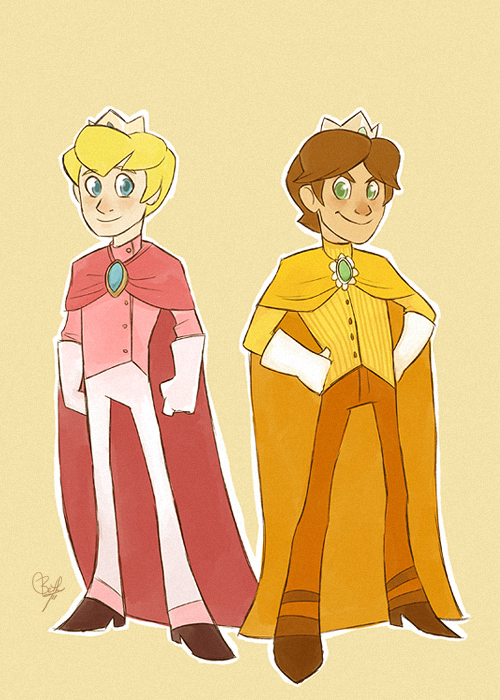(Happily continuing from where we left it
yesterday...)
"Well then, are all videogames like this, limiting you to play with this one-dimensional ‘tough guy’ type, both in ways of body shape and personality? Of course not; there are lots of games that do offer lead character of color, a female protagonist or any other personage that otherwise deviates from the limiting norm as mentioned above. It is not like no alternatives are offered ever at all. Nonetheless, adding more options to the pile of features doesn’t necessarily create more difference in gaming models. In contrast: this simply constitutes another norm, as the variety within the category ‘women’ in videogames is also a lacking issue. While the presence of their gender is already underrepresented, the female characters that do appear are often limited to one ‘type’ of body as well: that of the (usually) light skin color, ‘fit’ body shape and big – if not huge – overly present breasts. Furthermore, their role often seems to be limited to being a sexy sidekick or
simply functioning as background decoration. Because of this, the main goal of their appearance in videogames seems to make them look sexy, rather than focusing on actual contribution to the story, such as through their personality, humor, in-game capabilities or combat experience, for instance.
Now of course, being sexy is not a bad thing per se, but the fact that so many female models are created along these limited lines does proof problematic, as it then becomes a matter of sexual objectification. Rather than being included in the adventure for, say, their tactical insights, witty personality or maybe even physical strength, many of these ‘sexualized’ women see their presence being reduced to providing visual pleasure. This gets even more emphasized by the clothes they are sometimes wearing, underscoring even more the uselessness of their ‘attractive’ appearance; as something not inherent to the story, yet overly present within videogames. Where most male characters are at least wearing comfy and protectful gear that makes sense considering the adventure they are heading towards – often a dangerous one - lots of female models are unnecessarily ‘stripped down’ and ‘sexed up’. Rather than getting armor that suits their needs, heroines commonly get provided with clothes that are primarily pointing out their bodily appearance rather than being fitted for the dangers they might be facing. If you’re wearing an armor that shows your naked legs and visible belly button, while at the same time emphasizing the size of your breasts,
you are obviously not fit for an adventure on high heels against countless enemies trying to hurt you, right? Well, try to explain this to the many game developers then, as their games often suggest otherwise. Despite the illogic of this kind of dress within the setting of the game, lots of female characters are nonetheless portrayed in such a ‘senselessly’ sexualized way, insomuch as that this then becomes a whole other cliché on itself. Thus, while the norm of ‘maleness’ is being challenged by adding more female characters to the pile of protagonists in gaming, this has the ironic consequence of helping another limited and stereotypical norm into place: that of the ‘sexy heroine’ as an alternative to the ‘tough guy’. Once again, a one-dimensional portrayal of characters becomes the dominant standard. And all because that is what the game developers choose to display – rather than offering the options to deviate from these fixed models.
Then, what does it mean when a videogame does enable me to decide upon the looks of the protagonist? Well, quite a lot actually, for now I am provided with the ability to make my own choices; to be able to ‘own’ the gaming experience. Especially when the ‘default’ model is yet another copy of that ‘tough guy’ type or ‘sexy heroine’, I will, simply for the sake of variety, often deliberately choose to play with a character that deviates from these standards. More than once, I intentionally alter my gaming model’s gender, skin color, hairstyle, clothing or other features whenever such options are available. By doing so, my actions become an ‘act of resistance’, however small that may be. Rather than playing with that overly used ‘hypermasculine’ (and often white) default character, I try to add as much variety into my gaming experiences as possible. Having played with too many ‘male’ characters already? Then the next session I’ll choose another gender. Tired of seeing a white modeled hero in a lead role again? Time to go for a different skin color as of now. You see, being able to make such subtle choices on the looks and likes of the protagonist can make a big difference on how I would experience a videogame. Not only does such variety make one adventure contrast more to the other, it also breaks with the rigid notions that there can be only be one ‘sort’ of character for a certain type of game; it questions stereotypical thinking that links gender, ethnicity and body type among other features to the limited places where they supposedly ‘belong’. For example, adding more female characters to action games challenges the idea that heroines have no place in ‘dangerous’ adventures. Rather than regulating them to second-tier-roles,
women could thus become a core-part of (action) games we well.

See my issues with the ‘fixed game models’ now? Being able to make my own choices enables me to break with racist, sexist and other restricting assumptions common in video game land. Even though I am, with all my choices, still bound to the options provided by the game developers, cherishing every opportunity (however small) that challenges the limited norms in videogames is a victory on itself. Maybe not so much in the eyes of everyone – the majority of the game developers are still white men and pre-dominantly target a male audience - but on a small scale, it can make a difference to the individual that does seek those alternatives. And maybe this is just a small step to the bigger change I am hoping for – that a little while from now ‘female’ models or ‘characters of color’ are not seen as additional features to the ‘tough guy standard’, but become an equal and worthy part of the world of video gaming as well. For there are games in which the ‘second option’ has become as popular as the ‘default model’ over time: one of my favorites being Mass Effect series, insomuch as that the final game in the trilogy made male and female characters starring the promotional videos. Not to mention that
the female version of protagonist Shepard is dubbed ‘Femshep’ in popular culture; as being a whole different character on itself rather than just a twist to the masculine standard. Indeed, while the first part of the Mass Effect series started with the white and male default, the sequels developed in such a way that in the end the lead character Shepard was no longer exclusively promoted as single gendered. On top of that, the popular opinion goes that the voice acting for Femshep is genuinely better performed than that of the original ‘guy Shepard’ – ironically, the ‘alternative option’ being the superior of the two. Oh, and then there’s this addition to Mass Effect 3 in which same-sex relationships become fully optional; something which was lacking in the previous two parts for at least the male designed Shepard, but which changed after many fans condemned the series for not including such romances and sexual subplots.
Therefore, the above example shows how merely including an opportunity to change the looks and likes of our videogame characters can lead to a shift of norms on the long term – if only the players embrace this as a chance to show the developers the need for more such ‘personalization’. What we see here is the change of a popular game hero from initially the white Caucasian and heterosexual male standard to a character that now varies in gender and sexual interest, while giving the gamer the option to alter the racial identity and looks of their hero(ine) as well. Of course, although you are still limited to the options given by the game itself – Shepard is young, slim shaped and muscular nonetheless and doesn’t vary at all in body shape – the underlying argument still stands: applauding the opportunity for small change in your videogame experience might lead to shifts on a bigger scale in the end. Even if the ‘second option’-kind of inclusion of Femshep in the first Mass Effect part were merely symbolic, the fans picked up on it – and that lead to the developers investing more into this path after all. Both sequels would not have taken that first step to add further diversity if it hadn’t been applauded as much by the fans. All because we, as gamers, actively deviated from the ‘default character’ did the game creators see what could *also* be part of an intense and worthy gaming adventure. The individual demands for more variety thus lead to a change on the larger scale; to the representation of more types of characters."
(Come back for more
tomorrow...)
While waiting for that, some further reading:
Daryo is one of those people that enjoys playing videogames and has a
mind set at reflecting on things with 'feminist glasses' on, hence the
love for Gender and Sexuality Studies.









